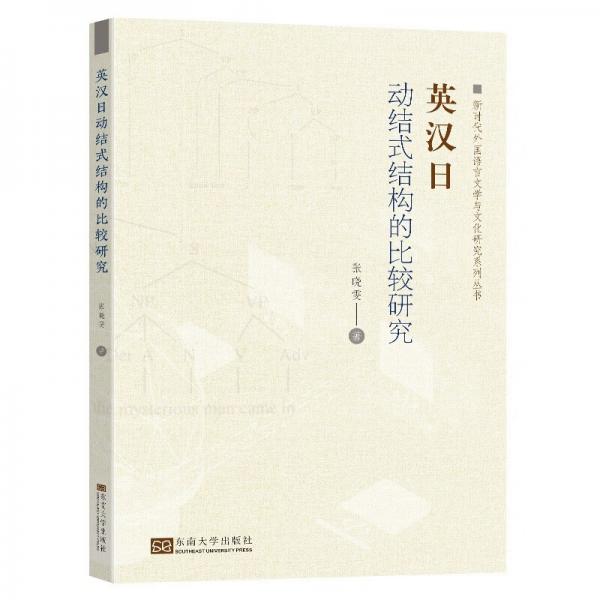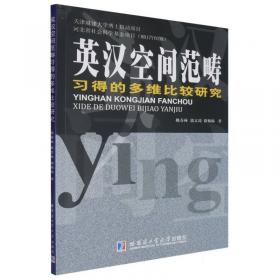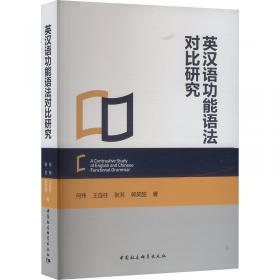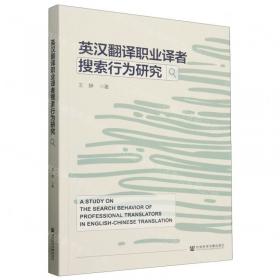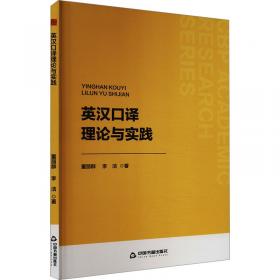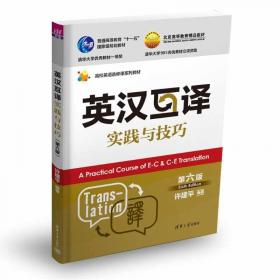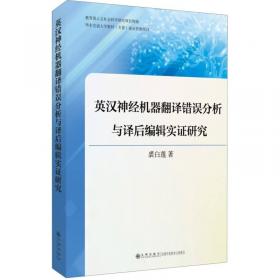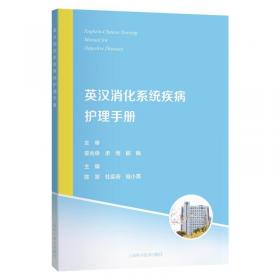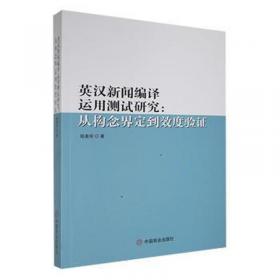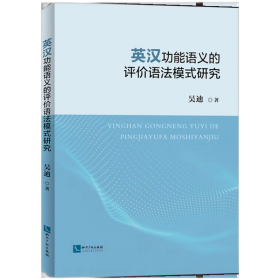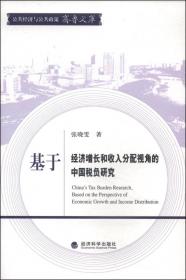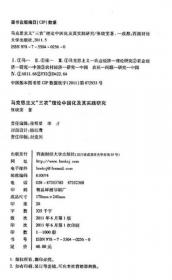英汉日动结式结构的比较研究/新时代外国语言文学与文化研究系列丛书
出版时间:
2022-08
版次:
1
ISBN:
9787576601671
定价:
68.00
装帧:
平装
开本:
16开
纸张:
纯质纸
页数:
167页
字数:
245.000千字
正文语种:
简体中文
-
本书基于较为丰富的语料和例证,分析了V-C-(NP)和V-DE-(NP)-C两种汉语动结式结构,并比较研究了汉语动结式结构与英、日语动结式结构,得出英语动结式结构与汉、日语动结式结构的不同,以及汉、日语动结式结构的异同,对非母语汉语学习者更好地理解汉语语言结构、提升学习汉语的效率有一定的帮助。 张晓雯,博士、副教授,现为淮阴工学院大外部副主任,研究方向为比较语言学;先后主持完成了江苏省社会科学基金项目、江苏省教育厅高校哲学社会科学基金项目、江苏省社科联研究课题、淮安市社科类研究课题,发表学术论文十余篇,其中CSSCI来源期刊1篇,国外期刊8篇。 Chapter 1 Resultative Constructions in English, Japanese and Chinese
1.1 Defining Resultatives and Resultative Constructions
1.1.1 English Resultative Constructions
1.1.2 Japanese Resultative Constructions
1.1.3 Chinese Resultative Constructions
1.2 Two Sharp Differences between Chinese Resultative Constructions
1.2.1 The Similarities between Chinese Two Types of Resultative Constructions
1.2.2 The First Sharp Difference between Chinese Resultative Constructions
1.2.3 The Possible Grammatical Weak V-DE-(NP)-A Construction in Chinese
1.2.4 The Second Sharp Difference between Chinese Resultative Constructions
1.3 Organization of the Book
Chapter 2 Chomsky\'s General Framework and Works on Resultative Constructions
2.1 Chomsky\'s General Framework in Syntax
2.1.1 Phrasal Structures
2.1.2 Theta Roles and the Deep Structures
2.1.3 Move
2.1.4 A Case Study in English
2.2 Foll\'s Three-layer System and Lin\'s Proposal
2.3 More on DE in V-DE-(NP)-A Construction: Previous Analyses
2.3.1 V-DE as a Phonological Word
2.3.2 DE as a Preposition
2.3.3 DE as a Derived Suffix
2.3.4 Zhu\'s Proposal of DE as a Semantic Element [BECOME]
2.4 Stage-level Predicates and Individual-level Predicates
2.4.1 Kratzer\'s Distinguishment of SLPs with ILPs by Event Argument
2.4.2 Zhang\'s Division of Chinese Adjectives
2.5 Li\'s Argument Structure Analysis
2.6 Li and Thompson\'s Analysis
2.6.1 Serial Verb Constructions
2.6.2 The Syntactic Structures of Subject-oriented V-V-(NP) Compounds
2.7 Sybesma\'s Small Clause Analysis
2.7.1 Sybesma\'s Small Clause Analysis on Resultative V-V-(NP) Compounds
2.7.2 Sybesma\'s Small Clause Analysis on V-DE-(NP)-V Constructions
2.8 Liang\'s Analysis of Subject-oriented Resultative V-V-(NP) Compounds
Chapter 3 V-DE-(NP)-A Constructions in Chinese as Strong Resultatives
3.1 Strong and Weak Resultatives in Chinese Resultative Constructions
3.2 V-DE-(NP)-A Construction in Chinese as Strong Resultatives
3.2.1 The Syntactic Structures of Weak Resultatives in Chinese
3.2.2 The Syntactic Structures of Strong Resultatives in Chinese
Chapter 4 The Possibility of Grammatical Weak V-DE-(NP)-A Constructions
4.1 The Possibility of Grammatical Weak V-DE-(NP)-A: On the Occasion of ILP
4.2 The Possibility of Grammatical Weak V-DE-(NP )-A: On the Occasion of Degree Words
Chapter 5 The Subject-oriented and Object-oriented Interpretations in Chinese
5.1 The Subject-oriented and Object-oriented Interpretations in V-V-(NP) Compounds
5.2 The Object-oriented Interpretation in Chinese V-DE-(NP )-V Constructions
5.3 The Syntactic Structures of Subject-oriented and Object-oriented Interpretations
5.3.1 The Syntactic Structure of the Subject-oriented Resultative V-V-(NP) Compounds
5.3.2 The Syntactic Structures of the Object-oriented V-DE-(NP)-V Constructions
5.3.3 The Syntactic Structures of the Object-oriented Resultative V-V-(NP) Compounds
5.4 The Subject-oriented Interpretation in Japanese Resultative V-V compounds
Chapter 6 Conclusion
Bibiography
Acknowledgements
-
内容简介:
本书基于较为丰富的语料和例证,分析了V-C-(NP)和V-DE-(NP)-C两种汉语动结式结构,并比较研究了汉语动结式结构与英、日语动结式结构,得出英语动结式结构与汉、日语动结式结构的不同,以及汉、日语动结式结构的异同,对非母语汉语学习者更好地理解汉语语言结构、提升学习汉语的效率有一定的帮助。
-
作者简介:
张晓雯,博士、副教授,现为淮阴工学院大外部副主任,研究方向为比较语言学;先后主持完成了江苏省社会科学基金项目、江苏省教育厅高校哲学社会科学基金项目、江苏省社科联研究课题、淮安市社科类研究课题,发表学术论文十余篇,其中CSSCI来源期刊1篇,国外期刊8篇。
-
目录:
Chapter 1 Resultative Constructions in English, Japanese and Chinese
1.1 Defining Resultatives and Resultative Constructions
1.1.1 English Resultative Constructions
1.1.2 Japanese Resultative Constructions
1.1.3 Chinese Resultative Constructions
1.2 Two Sharp Differences between Chinese Resultative Constructions
1.2.1 The Similarities between Chinese Two Types of Resultative Constructions
1.2.2 The First Sharp Difference between Chinese Resultative Constructions
1.2.3 The Possible Grammatical Weak V-DE-(NP)-A Construction in Chinese
1.2.4 The Second Sharp Difference between Chinese Resultative Constructions
1.3 Organization of the Book
Chapter 2 Chomsky\'s General Framework and Works on Resultative Constructions
2.1 Chomsky\'s General Framework in Syntax
2.1.1 Phrasal Structures
2.1.2 Theta Roles and the Deep Structures
2.1.3 Move
2.1.4 A Case Study in English
2.2 Foll\'s Three-layer System and Lin\'s Proposal
2.3 More on DE in V-DE-(NP)-A Construction: Previous Analyses
2.3.1 V-DE as a Phonological Word
2.3.2 DE as a Preposition
2.3.3 DE as a Derived Suffix
2.3.4 Zhu\'s Proposal of DE as a Semantic Element [BECOME]
2.4 Stage-level Predicates and Individual-level Predicates
2.4.1 Kratzer\'s Distinguishment of SLPs with ILPs by Event Argument
2.4.2 Zhang\'s Division of Chinese Adjectives
2.5 Li\'s Argument Structure Analysis
2.6 Li and Thompson\'s Analysis
2.6.1 Serial Verb Constructions
2.6.2 The Syntactic Structures of Subject-oriented V-V-(NP) Compounds
2.7 Sybesma\'s Small Clause Analysis
2.7.1 Sybesma\'s Small Clause Analysis on Resultative V-V-(NP) Compounds
2.7.2 Sybesma\'s Small Clause Analysis on V-DE-(NP)-V Constructions
2.8 Liang\'s Analysis of Subject-oriented Resultative V-V-(NP) Compounds
Chapter 3 V-DE-(NP)-A Constructions in Chinese as Strong Resultatives
3.1 Strong and Weak Resultatives in Chinese Resultative Constructions
3.2 V-DE-(NP)-A Construction in Chinese as Strong Resultatives
3.2.1 The Syntactic Structures of Weak Resultatives in Chinese
3.2.2 The Syntactic Structures of Strong Resultatives in Chinese
Chapter 4 The Possibility of Grammatical Weak V-DE-(NP)-A Constructions
4.1 The Possibility of Grammatical Weak V-DE-(NP)-A: On the Occasion of ILP
4.2 The Possibility of Grammatical Weak V-DE-(NP )-A: On the Occasion of Degree Words
Chapter 5 The Subject-oriented and Object-oriented Interpretations in Chinese
5.1 The Subject-oriented and Object-oriented Interpretations in V-V-(NP) Compounds
5.2 The Object-oriented Interpretation in Chinese V-DE-(NP )-V Constructions
5.3 The Syntactic Structures of Subject-oriented and Object-oriented Interpretations
5.3.1 The Syntactic Structure of the Subject-oriented Resultative V-V-(NP) Compounds
5.3.2 The Syntactic Structures of the Object-oriented V-DE-(NP)-V Constructions
5.3.3 The Syntactic Structures of the Object-oriented Resultative V-V-(NP) Compounds
5.4 The Subject-oriented Interpretation in Japanese Resultative V-V compounds
Chapter 6 Conclusion
Bibiography
Acknowledgements
查看详情
-
九五品
浙江省杭州市
平均发货8小时
成功完成率96.05%
-
九五品
浙江省杭州市
平均发货8小时
成功完成率96.05%

 占位居中
占位居中

